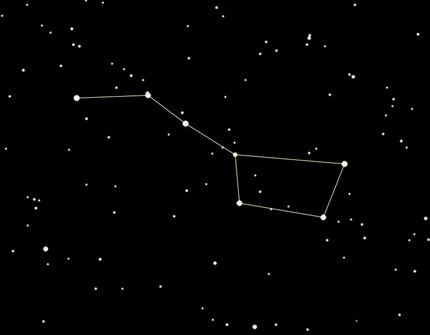2
2009
Who Discovered Big Dipper
Big Dipper, or Ursa major, is the 3rd largest constellation. It is easy to spot the Big dipper because it is the only constellation that never sets into the horizon. In England the Big Dipper is known as the Plough. Within Big Dipper you can see other star patterns
Earliest sightings of Big Dipper
The Big Dipper was mentioned quite extensively in ancient Hindu Astronomy. It was called Sapta Rishi, which meant “The Seven Sages.” In China the Big Dipper is considered part of the Northern Dipper. Northern Dipper has seven stars in all which, when taken together, is called “The Seven Stars of the Northern Dipper.”
In the Middle East, Big Dipper’s four stars are seen as a coffin. The three other stars beside it are seen as mourners.

It is unclear who and when the Big Dipper was first sighted. Being a part of Ursa Major and Ursa Minor, the constellation may have been named and seen for thousands of years. In 2006 Wu Jiacai of China found a stone carving dating back to the Neolithic times (9,500 BCE). Up on Baimiaozi Mountain, Wu picked up a stone shaped like a yam with Big Dipper etchings on the surface. Along with the relic Wu also found weird looking images which he believed were religious artifacts.

Big Dipper according to Greek mythology
The story goes that Zeus fell in love with Callistro, a mortal. Callistro loved adventure and hunting. The ever jealous Hera, Zeus’s wife, got word of this and instantly turned the mortal woman into a bear. Callistro was out hunting and her son Arcas did not know what happened. Sensing his mother might have got in trouble, Arcas resolved to find her. Arcas strayed into a forest and came across a bear. The bear charged at him, and Arcas was ready to defend himself. He drew an arrow for his bow and was ready to kill the bear. To save his former lover from death, the most Zeus could do was change Arcas into a smaller bear. Hera’s curse proved too strong for Zeus. He took both bears by the tail and flung them into the sky where they remained immortal together. All of that was no secret to Hera. She made sure mother and son would not have it easy. She banished them into a part of the sky that never set.
Big Dipper’s planets
There are exoplanets, or livable planets around Big Dipper. As of last count there are ten. None of them are found orbiting the stars of Big Dipper itself. In fact they orbit around the stars of Ursa Major. The most visible of these stars is 47 Ursae Majoris b. It was discovered as an exoplanet in Ursa Major in 1996. Five years later another exoplanet was found near it. It was named 47 Ursae Majoris c. Both exoplanets have a star that is very visible to the naked eye at a magnitude of 5.1
Near and around Big Dipper are superjovian planets. These are planets with incredible mass and size. One such planet is HD 80606 b. The easiest to spot, however, is HAT-P-3 b. It lies at the tip of Big Dipper’s tail. The rest are too distant to be seen.

 An article by
An article by 




